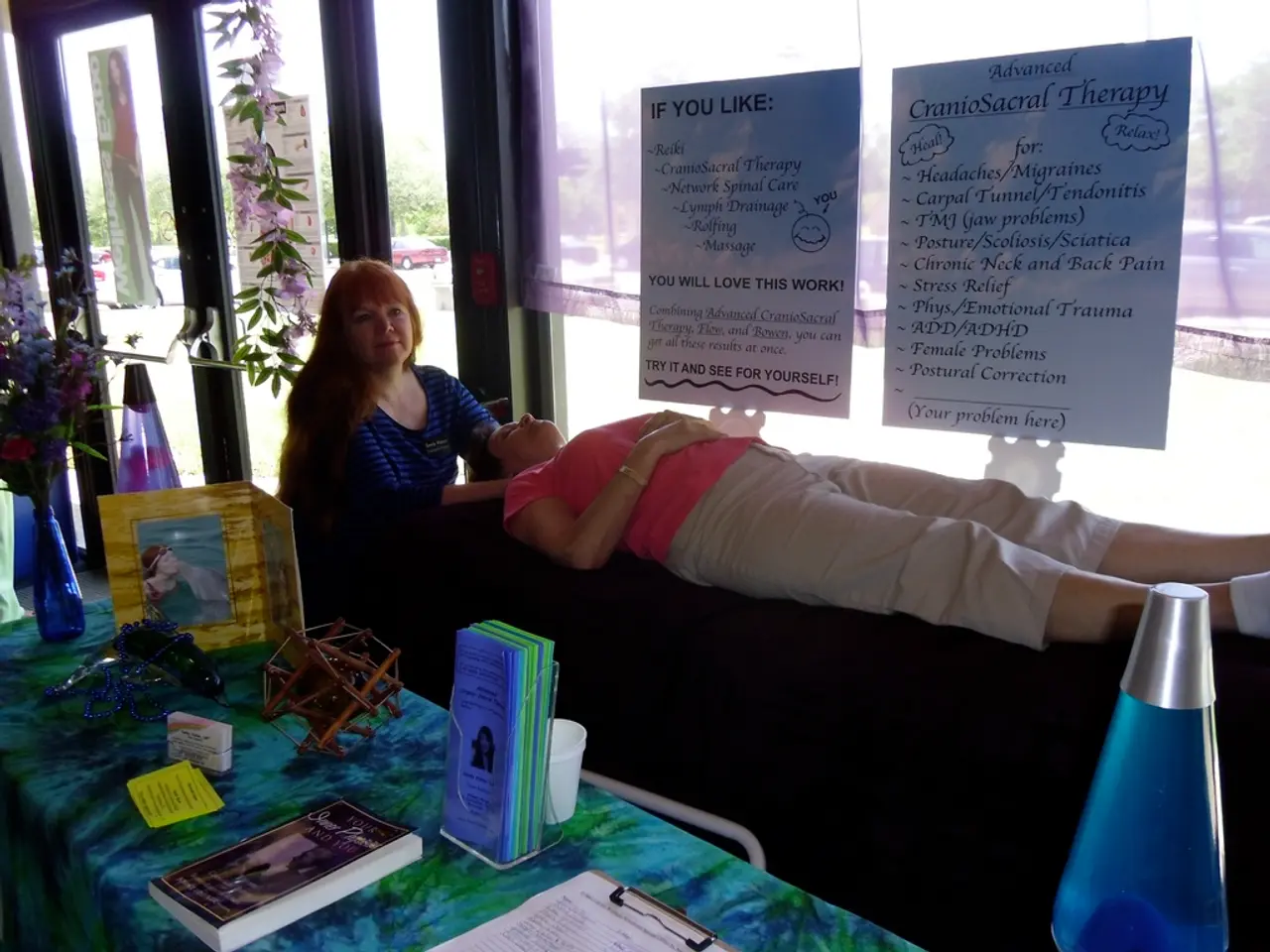Back issues and scoliosis: Occurrence, symptoms, and remedies
Adult Scoliosis and Lower Back Pain: Understanding the Connection
Adult scoliosis, a condition characterised by an abnormal lateral curvature of the spine, is often associated with lower back pain in individuals over 45 or 50[1][2]. This degenerative scoliosis arises due to age-related deterioration of spinal components such as discs, facet joints, and vertebrae[1][2].
The most common symptom of this degenerative process is lower back pain, which can range from mild to chronic and debilitating[1][3]. This pain is closely linked to degenerative changes, spinal instability, nerve involvement, and postural strain[1][4].
The degenerative changes in the spine, such as age-related arthritis, disc wear, and facet joint osteoarthritis, weaken the spine’s structural integrity, triggering curvature and imbalance[1][2][3]. As degeneration progresses, the spine becomes less stable and more prone to abnormal curvature, leading to increased mechanical stress and muscle imbalances[1][4].
Nerve compression due to curvature and degeneration can result in radiating pain, numbness, or weakness in the legs[1][3]. Altered spine alignment places uneven load across vertebrae and musculature, exacerbating pain and functional limitation[1][4].
In severe adult scoliosis, the curvature causes pressure on vertebrae and affects pelvic alignment, which increases strain on lower back muscles and joints, intensifying pain and functional decline[4].
Management of adult scoliosis focuses on pain relief, improving spinal stability, muscle strengthening, and slowing curve progression[1][4][5]. Various treatments, such as physical therapy, stretching programs, back braces, spinal injections, transcutaneous electrical nerve stimulation (TENS), acupuncture, and yoga, may help alleviate back pain and improve mobility[6][7].
It is important to note that not all individuals with scoliosis experience pain or other symptoms[8]. Additionally, back pain, especially lower back pain, is common among the general population and may have a variety of causes besides scoliosis[9].
Recognising the signs of scoliosis, such as unevenness at the top of the shoulders, one shoulder blade more prominent than the other, noticeable differences in the height of the rib cage or hips, an off-center head, and skin irregularities along the spine, can aid in early detection and treatment[10].
Research has found that the size of the curve in a person's spine does not necessarily correlate with back pain[11]. Therefore, it is crucial to consult a healthcare professional for accurate diagnosis and appropriate treatment.
[1] NHS. (2021). Scoliosis. Retrieved from https://www.nhs.uk/conditions/scoliosis/
[2] Mayo Clinic. (2021). Scoliosis. Retrieved from https://www.mayoclinic.org/diseases-conditions/scoliosis/symptoms-causes/syc-20356465
[3] American Academy of Orthopaedic Surgeons. (2021). Scoliosis. Retrieved from https://orthoinfo.aaos.org/en/diseases--conditions/scoliosis
[4] National Institute of Neurological Disorders and Stroke. (2021). Scoliosis Fact Sheet. Retrieved from https://www.ninds.nih.gov/Disorders/Patient-Caregiver-Education/Fact-Sheets/Scoliosis-Fact-Sheet
[5] Scoliosis Research Society. (2021). Scoliosis Management and Treatment. Retrieved from https://www.srs.org/patients/treatment/
[6] National Institute for Health and Care Excellence. (2016). Scoliosis: assessment and management in children, young people and adults. Retrieved from https://www.nice.org.uk/guidance/ng41
[7] Scoliosis Research Society. (2021). Non-operative Treatment. Retrieved from https://www.srs.org/patients/treatment/non-operative-treatment/
[8] National Institute of Arthritis and Musculoskeletal and Skin Diseases. (2021). Scoliosis. Retrieved from https://www.niams.nih.gov/health-topics/scoliosis
[9] Mayo Clinic. (2021). Lower back pain. Retrieved from https://www.mayoclinic.org/diseases-conditions/lower-back-pain/symptoms-causes/syc-20362134
[10] Scoliosis Research Society. (2021). Signs and Symptoms of Scoliosis. Retrieved from https://www.srs.org/patients/signs-symptoms/
[11] National Institute of Neurological Disorders and Stroke. (2021). Scoliosis Fact Sheet. Retrieved from https://www.ninds.nih.gov/Disorders/Patient-Caregiver-Education/Fact-Sheets/Scoliosis-Fact-Sheet#symptoms
- Adult scoliosis, a chronic medical condition concerning an abnormal lateral curvature of the spine, can be associated with other joint pain and chronic diseases such as osteoarthritis.
- The connection between scoliosis and other health issues extends to various aspects, including neurological disorders like Parkinson's disease and autoimmune disorders such as rheumatoid arthritis.
- In the realm of mental health, individuals with scoliosis might experience stress, anxiety, or depression due to living with a visible and sometimes debilitating condition.
- Supporting overall health and wellness is vital for managing scoliosis, and this includes fitness and exercise, healthy nutrition, and skin care.
- Regular cardiovascular health screening is essential as heart diseases can coexist with degenerative scoliosis and contribute to lower back pain.
- Regarding respiratory conditions, they might complicate scoliosis treatment and vice versa, given the close relationship between lung function and posture.
- Digestive health is also interconnected, as constipation or acid reflux can worsen lower back pain due to inappropriate alignment of the spine.
- Eye health can be affected by scoliosis, leading to impaired vision or difficulty with eye movements, emphasizing the need for regular check-ups.
- For those experiencing hearing loss, spatial orientation and balance can be disturbed – a situation that might exacerbate back pain and postural imbalances caused by scoliosis.
- Employees with scoliosis may experience difficulties at the workplace-wellness, requiring ergonomic adjustments to their work environments and access to therapies and treatments such as cbd oil.
- Managing other pain, particularly chronic diseases like fibromyalgia, might be crucial when solving lower back pain associated with scoliosis through pain relief strategies and physical therapy.
- Diabetes, as a significant chronic disease, can impact the severity and progression of scoliosis by causing nerve damage in the lower back and weakening the immune system against certain skin conditions.




